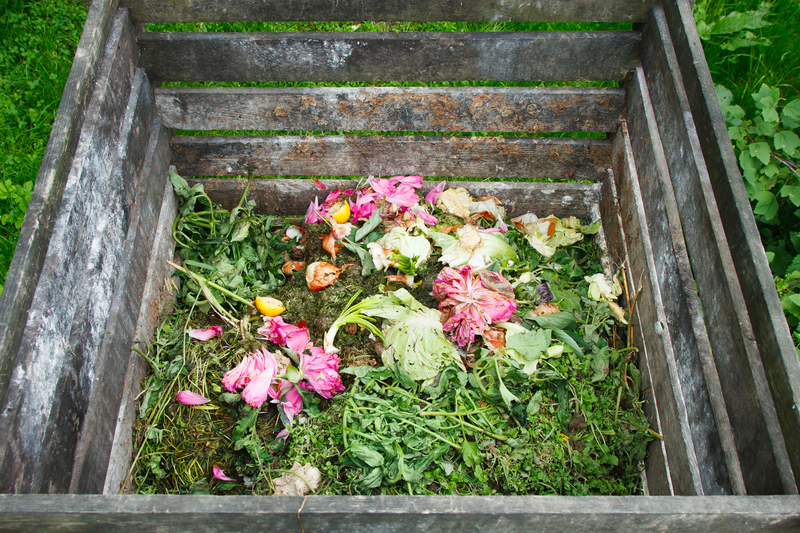Simple Steps for Proper PPE Waste Management
In recent years, the widespread use of Personal Protective Equipment (PPE) has become essential for safeguarding lives--both in medical settings and everyday environments. While PPE such as masks, gloves, and face shields protect us from harmful pathogens, improper disposal and management of PPE waste can wreak havoc on our environment and public health.
This comprehensive guide details simple steps for proper PPE waste management and highlights why every individual and organization should prioritize effective PPE waste practices.

Understanding PPE Waste: What Is It?
PPE waste refers to discarded items designed for personal protection, including but not limited to:
- Disposable face masks and respirators
- Nitrile, latex, and vinyl gloves
- Protective gowns and coveralls
- Face shields and goggles
- Boot or shoe covers
The bulk use of these items, especially during health emergencies, dramatically increases single-use PPE waste volumes. Poorly managed PPE waste can lead to pollution, health hazards, and contribute significantly to the global plastic waste crisis.
Why Proper PPE Waste Management is Crucial
Improper PPE waste disposal can:
- Endanger waste workers and the public by spreading infection
- Clog sewage systems causing urban flooding
- Lead to environmental pollution in water bodies and soil
- Pose risks to wildlife that may ingest or become entangled in discarded PPE
By following best practices for PPE waste management, we can minimize these risks and contribute to a cleaner, safer world.
Step-by-Step Guide: Managing PPE Waste Effectively
Step 1: Segregate PPE Waste from Regular Trash
The first rule in any effective PPE disposal system is proper segregation. PPE waste should never mix with recyclables, food waste, or household garbage. Instead:
- Designate specific, clearly-labeled containers or bins just for PPE waste
- Use color-coded bags (commonly yellow or red) to flag potential biological risk
- Educate family members, employees, or facility users about which bins to use for PPE waste
Step 2: Secure PPE Waste Properly
When disposing of used PPE, always:
- Place items in leak-proof bags or containers
- Tie off or seal bags securely to prevent materials from spilling out
- Avoid pressing down on waste to reduce the risk of exposures
- If visibly contaminated, double-bag used PPE for extra protection
Tip: Wash or sanitize hands thoroughly after touching and securing PPE waste.
Step 3: Temporary Storage Before Final Disposal
Household and institutional PPE waste should be kept away from children, pets, and the general public before collection. Best practices include:
- Storing waste bins in well-ventilated, isolated areas
- Ensuring bins remain lidded at all times
- Labeling storage areas with warning notices, such as "PPE Waste--Hazardous"
Step 4: Designated Collection and Transport
Once PPE waste is ready for pickup, it's vital to:
- Arrange for authorized waste collectors or municipal services for hazardous materials
- Ensure transport vehicles are leak-proof and properly labeled
- Avoid manual handling--use hands-free loading where possible
Step 5: Safe Final Disposal Methods
Most regions recommend incineration or specialized treatment for PPE waste disposal. Depending on facilities available:
- Incinerate PPE at high temperatures to destroy pathogens and prevent environmental contamination
- Use autoclaving (steam sterilization) for materials that are not incinerated
- Never attempt to recycle used disposable PPE, as it may contaminate recyclable materials
- For non-hazardous items (unused masks, for example), follow local solid waste management guidelines
Best Practices for PPE Waste at Home
Household Guidelines for PPE Waste Management
PPE use in homes has risen greatly since the COVID-19 pandemic. Use these straightforward strategies to keep your family and community protected:
- Designate a "PPE bin": Use a covered container lined with a yellow or red bag for used PPE items.
- Double-bag if needed: If masks, gloves, or tissues are soiled, use two bags to reduce leakage risks.
- Seal and label: Close bags securely, and mark them with a note (e.g., "Used PPE--Do Not Recycle").
- Limit contact: Take out the PPE waste bag only on collection day to minimize handling.
- Wash hands immediately: Always wash hands or use sanitizer after disposing of PPE waste.
PPE Waste Management in Workplaces and Healthcare Settings
Employer Responsibilities for Safe PPE Waste Handling
Businesses--not just hospitals--must establish robust PPE waste management protocols:
- Provide sufficient bins: Place clearly-marked PPE waste containers in strategic areas (entrances, restrooms, workstations)
- Create staff training programs: Teach all personnel the importance of correct PPE waste segregation and disposal
- Display signage: Use instructional posters near PPE bins to guide staff and visitors
- Ensure regular collection: Schedule daily pickups of filled PPE waste bins to prevent overflow and contamination
- Protect custodial staff: Provide janitorial teams with proper PPE and training to handle waste safely
Additional Measures for Healthcare Facilities
Hospitals and clinics often generate the largest quantities of PPE waste. Specific requirements include:
- Strict compliance with biohazard waste protocols
- On-site sterilization and incineration capabilities
- Traceable waste documentation and logs
- Regular staff updates on evolving PPE waste regulations and technologies
Reducing PPE Waste: Sustainable Solutions
Can PPE Waste Be Minimized or Recycled?
While most disposable PPE cannot be recycled through traditional means, several innovative strategies can help minimize PPE waste at both individual and institutional levels:
- Switch to reusable PPE where safe and practical--such as cloth masks, washable gowns, or non-disposable face shields
- Source eco-friendly PPE designed from biodegradable or compostable materials
- Support research and recycling programs for decontamination and material recovery where available
- Educate staff and the public about only using PPE when absolutely necessary to cut down waste volumes
It's crucial to note that not all "recyclable" PPE is safe to process via standard recycling plants due to contamination risks. Specialized recycling facilities are being developed to safely treat and recycle PPE waste into new products.
The Role of Communities and Local Authorities
Community Programs for Safe PPE Disposal
Neighborhoods and community programs can take action by:
- Organizing PPE waste drop-off and collection drives
- Installing accessible PPE bins in public areas like parks, transit stops, and markets
- Raising awareness about the dangers of littering masks and gloves in public spaces
- Collaborating with local governments for efficient PPE waste management solutions
Enforcement and Policy
Local authorities must enforce bans on indiscriminate PPE dumping and ensure:
- Punitive measures for illegal disposal
- Funding for PPE waste collection infrastructure
- Public education campaigns on the risks of improper PPE waste handling
Environmental Impacts of Improper PPE Waste Disposal
Global Pollution Crisis
Unsafely discarded PPE ends up clogging waterways, littering landscapes, and polluting oceans. Most disposable PPE is made from plastics that can persist in the environment for hundreds of years. Not only do these materials harm aquatic life, but they also eventually break down into microplastics--further threatening food chains and possibly human health.
Protecting Wildlife and Ecosystems
Wildlife may mistake discarded gloves and masks for food or become entangled, leading to injury or death. By meticulously managing PPE waste, we not only protect ourselves but also preserve our planet's biodiversity.

Frequently Asked Questions on PPE Waste Management
1. Why can't I recycle disposable masks or gloves?
Disposable PPE is typically contaminated with pathogens and made from mixed materials, making it unsafe and impractical for standard recycling processes.
2. What should I do with PPE from someone who is sick at home?
Double-bag all waste, seal tightly, and mark clearly as medical/PPE waste. Follow local public health advice for safe pickup or drop-off arrangements.
3. Are there alternatives to single-use PPE?
Yes. Reusable cloth masks and gowns are widely available and suitable for non-medical settings. Always follow health guidelines for proper sanitation.
4. Is incineration the only safe method of PPE waste disposal?
Incineration at regulated facilities is the most recommended method. However, steam sterilization (autoclaving) and other novel solutions are emerging, especially in places lacking incinerators.
Conclusion: Taking Responsibility for PPE Waste
The ever-growing mountain of PPE waste is a global challenge--but with the simple steps detailed above, individuals, families, businesses, and governments can all play a part in mitigating the problem. From segregation and secure disposal, to educational initiatives and policy enforcement, every action counts.
Adopt these simple steps for proper PPE waste management today to protect not only human health but our environment for future generations.
Key Takeaways
- Always segregate PPE waste from regular trash and recyclables.
- Secure and seal PPE waste in labeled, leak-proof bags.
- Arrange for timely collection by authorized waste management services.
- Promote sustainability with reusable PPE and eco-friendly products where safe.
- Support and follow local guidelines for PPE waste disposal to prevent pollution and health risks.
Taking these steps not only ensures compliance with regulations, but also supports a cleaner, healthier, and more responsible society.
